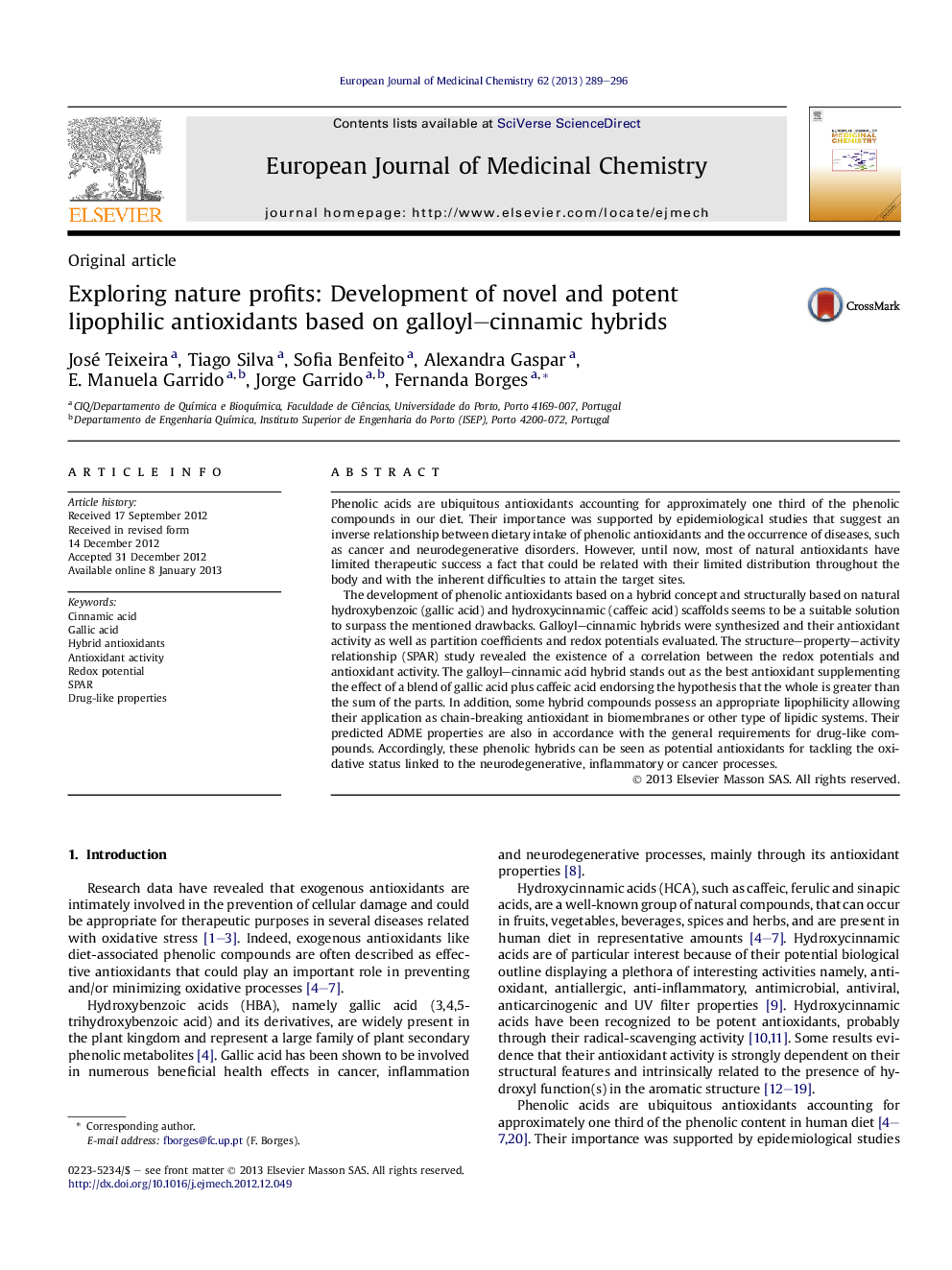| Article ID | Journal | Published Year | Pages | File Type |
|---|---|---|---|---|
| 1394305 | European Journal of Medicinal Chemistry | 2013 | 8 Pages |
Phenolic acids are ubiquitous antioxidants accounting for approximately one third of the phenolic compounds in our diet. Their importance was supported by epidemiological studies that suggest an inverse relationship between dietary intake of phenolic antioxidants and the occurrence of diseases, such as cancer and neurodegenerative disorders. However, until now, most of natural antioxidants have limited therapeutic success a fact that could be related with their limited distribution throughout the body and with the inherent difficulties to attain the target sites.The development of phenolic antioxidants based on a hybrid concept and structurally based on natural hydroxybenzoic (gallic acid) and hydroxycinnamic (caffeic acid) scaffolds seems to be a suitable solution to surpass the mentioned drawbacks. Galloyl–cinnamic hybrids were synthesized and their antioxidant activity as well as partition coefficients and redox potentials evaluated. The structure–property–activity relationship (SPAR) study revealed the existence of a correlation between the redox potentials and antioxidant activity. The galloyl–cinnamic acid hybrid stands out as the best antioxidant supplementing the effect of a blend of gallic acid plus caffeic acid endorsing the hypothesis that the whole is greater than the sum of the parts. In addition, some hybrid compounds possess an appropriate lipophilicity allowing their application as chain-breaking antioxidant in biomembranes or other type of lipidic systems. Their predicted ADME properties are also in accordance with the general requirements for drug-like compounds. Accordingly, these phenolic hybrids can be seen as potential antioxidants for tackling the oxidative status linked to the neurodegenerative, inflammatory or cancer processes.
Graphical abstractFigure optionsDownload full-size imageDownload as PowerPoint slideHighlights► Galloyl–cinnamic acid hybrids reveal to be effective antioxidants. ► The hybrids can supplement the effect of gallic acid plus caffeic acid blend. ► Hybrid derivatives reveal to possess increased lipophilicity. ► Hybrids can be applied as chain-breaking antioxidants in lipidic systems.
